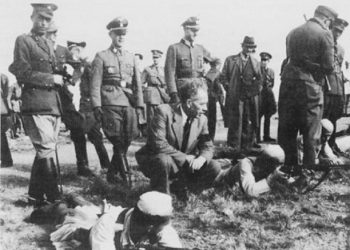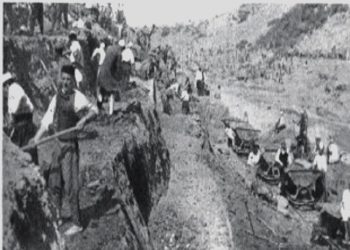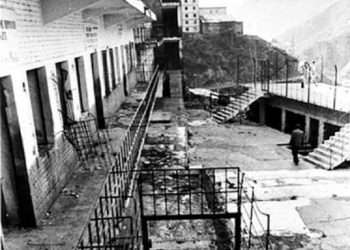By Kastriot Dervishi
Memorie.al / In the spring of 1968, Unit No. 303, after having “walked” building the greatest works of socialism, stopped at its last station, in Spaç. The purpose of being stationed here was to extract the mineral in Spaç, as well as its processing in Reps, a place where the Copper Enrichment Factory was built. On April 28, 1968, the last transfer of convicts took place, from Elbasan to Spaç in Mirdita. The former convict, Kristo Mema, indicates that the date of his arrival in that camp is April 20, 1968. The former commander of the Spaç camp, Haxhi Gora, writes in a letter dated 18.9.1980 that the transfer of convicts continued throughout the month of April. Based on the testimony of Robert Vullkani, one of the first convicts to go to that camp, it turns out that the prisoners arrived in three groups in Spaç.
Tanush Kaso was one of the people who were moved from Elbasan to Spaç. The convicts were those who were placed in seven large metal and board barracks, covered with tar material. In one barracks, there were almost 100 convicts. Some of the prisoners at that time were: Ali Hoxha (musician), Osman Kazazi, Haki Slatina, Astrit Delvina, Robert Vullkani, Ernest Troshani, Vangjel Lezho, etc. Later, other convicts arrived, such as At Zef Pllumi, etc. The command was located outside the camp perimeter.
As soon as the prisoners arrived there, a protest began, as they did not want to work in the mine. Because of this, the prisoner Dilaver Radëshi (a former soldier with the rank of colonel) went on a long hunger strike, which he only interrupted when his mother arrived in prison. Pyrite and copper were mined in Spaç. The mine was extremely primitive, equipped only with some wooden armor. The water was undrinkable, due to contamination with the many minerals that the soil of Spaç yielded. Due to the bad water, many convicts quickly lost their teeth.
According to the security scheme of the ward, Spaç was a fenced camp in difficult terrain. Four military platoons were engaged to secure the ward, which were on 24-hour duty in 30 posts (carracks) with soldiers armed with automatic weapons and light machine guns. Minerals were mined in four such areas. The prisoner in Spaç had these personal items provided by the camp command, according to the previously determined norm: 2 pairs of clothes, 1 aluminum or plastic gourd, 1 toothbrush, 1 notebook, 1 bowl, 1 aluminum tablespoon, 1 mattress, (it was not stated how many) blankets, 1 sheet.
According to the internal regulations of the camp, the prisoners had to obey the command in everything, had to fulfill the work norm, etc. The prisoners were allowed to take from their families, 15 kg. of items (fruits, vegetables were not included here), to meet their families twice a month for 15 minutes, to send two letters a month to their families (always within the country), to subscribe to the press, etc. Telegrams and postcards were allowed without restriction. The convict could also write letters to the Central Committee of the Albanian People’s Liberation Army, the Presidium of the People’s Assembly, the Council of Ministers, the Supreme Court, the Ministry of Internal Affairs, local bodies, etc.
On June 17, 1968, some of the convicts of that camp tried to build a tunnel to escape, but they could not. During 1969, 15 other convicts had tried to escape, of whom 6 were captured or killed and 9 others were captured from the first day to the eighth. From the study of the cases, it turned out that in 61% of them, they had chosen the bad weather, with fog, rain, snow, after having previously studied the conditions of the camp’s siege and the guard posts. Escapes were usually undertaken during shift changes, or from the mine galleries, by making a tunnel to reach the surface of the earth, outside the camp territory.
In the following years, the barracks were gradually replaced by residential buildings. Around 1971, one of the buildings was built to house the prisoners. In 1973, work began on the construction of the second building, adjacent to the first. According to the plan previously drawn up by the Ministry of Internal Affairs and approved by Minister Kadri Hazbiu, in the event of a state of war, the department would be moved to Berat. The Spaç Camp (Department 303) organized its work and functioned according to a daily schedule. The main points of this schedule, according to the schedule, were:
530 wakeup.
600 – 630 breakfast.
700 – 1500 work in the mine.
1700 – 1710 roll call.
1710 – 1930 reading the press and materials of the Albanian People’s Liberation Army.
2000 – 2030 lunch.
2100 – 530 sleep.
During 1973, there were 65 objections from convicts to go to work. After the repressive measures taken this year, a year later, the figure was reduced to 7 such. The plan, until November 1973, was to produce 59,600 tons of copper; in fact 59,702 tons were produced. For pyrite, 32,858 tons were produced or 1.8 thousand, above the plan.
The plan for 1974 was to produce 65,000 tons of copper. 76,000 were produced. For pyrite, 43,000 tons were produced or 3 thousand above the plan. In 1975, the department employed around 517 people, while 152 convicts were locked up in the dungeons, “for breach of discipline”. In 1975, the Spaç department had 356 firearms in its inventory, mainly automatic weapons.
In a 1976 report, the department command reported: “In the 303 Spaç departments, there have been no escapes of convicts for 4 years. Two who attempted to escape in 1975 were eliminated without leaving the encirclement. In Spaç, enemies of the Party and the people, with a pronounced social danger, are serving their sentences. There are difficulties in securing them in the department and the work fronts, the cadres and all the staff, due to the very conditions of the terrain where this department is deployed”, the annual report of the prisons stated.
In 1976, out of the planned 90,000 tons, 96,513 tons of copper were extracted. In the same year, out of the planned 36,000 tons, 36,057 tons of pyrite was extracted. In 1976, 633 convicts worked in Ward 303 Spaç, of whom only 67 were ordinary prisoners. The prison staff guarding them at this time consisted of 152 guards, soldiers, officers and police officers.
Escapes from the camp could only be made during working hours, through short galleries. Thus, on 9.12.1977, convicts Stavro Guxo and Manol Qirici made an escape without any injuries, “blowing up” all the vigilance of the camp guards.
The data of 26.12.1977 from the camp command informs us that the capacity of the two buildings was for 762 prisoners, while at that moment, there were 73 more, making a total of 835 prisoners. At the end of January 1977, there were 725 political prisoners and 28 ordinary prisoners in the camp. At the end of December 1977, this number was 877 political prisoners and 48 ordinary prisoners.
At the end of January 1978, there were 877 political prisoners and 48 ordinary prisoners in the unit. At the end of November 1978, there were 905 political prisoners and 37 ordinary prisoners in the unit. In a report dated 14.10.1978, it was stated that the prisoners Vasil Ziu, Frederik Shestani, Refik Beqo, Ushtar Çobo, Ilir Agaraj, Nikolla Shyti and Gaspër Gaspri had refused to go to work, claiming to be sick. For this action, they were punished by being put in the dungeon.
If we look at the statistics kept by the camp authorities, we will notice, for example, that in January-July 1979 alone, the prisoners had extracted respectively:
– 89,459 tons of copper.
– 3,275 tons of pyrite.
– 2,547 linear meters of works.
The quality of the mineral was 0.93.
All the work was carried out in excess of the plan. The heights at which the convicts worked were between 698-700 meters above sea level. There were exits outside the camp enclosure, in almost all the galleries. But to get there, you had to know these. The galleries suspected of escape were blocked. However, they could not be closed to the maximum. According to information dated 24.8.1978, the Spaç camp had 3 checkpoints. This was explained by the conditions of maximum security for the convicts.
On 11.6.1979, the convict Refik Beqo was killed. He was shot by 5 snipers, whose numbers were between 13-17 (there were 30 snipers in total). The command, after highlighting the positive aspects of the merciless attack on the “enemy element”, criticized the unnecessary waste of ammunition, from 5 directions!
At the end of January 1979, there were 920 political prisoners and 31 ordinary prisoners in the Spaç camp. 530 prisoners worked underground. At the end of September, there were 919 political prisoners and 25 ordinary prisoners in the camp. In Spaç, the food given to the prisoners was of poor quality, completely outside any human standards or norms. (After all, when even for military units, dormitories, canteens of volunteers who participated in national or local actions, those of agricultural cooperatives, social food restaurants, or the population, the food left much to be desired, it was not expected that in Spaç it would be better).
But what constitutes one of the most inhumane acts of the communist regime of Enver Hoxha and his successor, Ramiz Alia, was the menu and daily food allowance given to prisoners, which led to atrophy or poisoning of the human body. Not in vain, the former convict Pal Gjergj Zefi (by profession a nurse, from whom the Spaç revolt of May 21, 1973 began), shot after that event, says in the investigation that; the food he had consumed was poisoned that led to weakness and then to slow death. And to think that this was done in parallel with the hard work that the convicts performed, with the daily violence that was exercised against them, as well as with the numerous isolations, is truly painful.
In a report dated August 27, 1979, it was admitted by the Spaç camp command that 150 prisoners had complained of poisoning. To appear “unclean”, the command blamed the “mistakes” of the prisoners, as well as the convicted doctor, Jetulla Gashi, (originally from Kosovo and arrested in Elbasan, where he worked as a doctor in the civil hospital of that city), as if he had to answer for the poor quality of the food and what the camp leaders did! Stomach aches and vomiting accompanied the prisoners’ daily life. According to the same report, in the summer of 1979, 150 prisoners had presented concerns.
On 2.10.1979, the camp command announced that 32 prisoners needed hospitalization, a relatively high number, considering that the figure was selected, with a tendency to reduce it. During 1979, five prisoners refused food. Meanwhile, prisoner Filip Rexha attempted to kill himself by jumping over the fence, where the camp guards, according to the regulations, opened fire without warning.
In 1980, 3,483 tons of copper, 1,400 tons of pyrite and 128 linear meters of galleries were excavated according to plan. Work in the mine was considered dangerous, according to reports from the leaders of the Ministry of Internal Affairs, and workers worked without protective helmets. In 1980 alone, according to statistics and minutes kept by the camp command, 365 prisoners were injured, of whom 1 died and 12 were seriously injured. At the end of June 1980, there were 980 political prisoners and 20 ordinary prisoners in the unit. In the first half of 1980 alone, 118 prisoners were sent to the dungeon with “disciplinary sentences.”
According to the information provided by the unit doctor, on 31.5.1980, 531 prisoners were working underground in Spac. 295 were working above ground, while the others were not working due to illness. 128 prisoners needed hospitalization. The camp itself had an infirmary with 8 beds. One toilet served 60 prisoners. In one shower (which rarely worked), 60 prisoners had to bathe. When they went out of the room where they slept, a prisoner had 1 m2 of space for ventilation.
In 1981, an average of 1,056 prisoners was created (data for May, 1,023 political and 33 ordinary). The capacity of the buildings was 504 people. So, they were more than double the number. For the months of March-April 1981, 18 deaths were reported in Spaç. In June, the number went up to 1,064 prisoners, of which only 26 were ordinary.
During 1981, 83,623 tons of copper (or 3 thousand above the plan) and 35,650 tons of pyrite (650 above the plan) were extracted. Also, 3,184 linear meters of mineral works were carried out, exceeding the plan. According to information dated 20.9.1981, the unit’s staff, in addition to the soldiers, consisted of 1 officer, 7 non-commissioned officers, 29 police officers. These came from; 42% from the working class, 33% from the cooperative peasantry, 25% from the police, etc. The soldiers, who came from compulsory service, only guarded the external system of the unit.
On 16.10.1982, the camp soldiers opened fire and killed, in an attempt to escape, the convict Hysen Merdani (also convicted of escape) and three days later, Rexhep Goçi (convicted of agitation and propaganda). The command proposed that they receive commendations from the Ministry of Internal Affairs. In the command report, dated 20.4.1982, the convicts Visar Zhiti, Muharrem Protoduari, Ibrahim Çuni, Zyber Selimi, Rexhep Gojani, Mysli Çelhyseni and Marash Kumbulla were accused of; “sabotaging” the extraction of the mineral.
Regarding this, the information report in question, among other things, states: “The current facts speak of the fact that this category of convicts, stand in their class positions, contrary to the party materials and the teachings of comrade Enver, to the interests of socialist society and their family. Therefore, the command has given them punitive measures, because they have committed violations and guilt, for not implementing internal rules, keeping prohibited items …”, – that report stated.
One of the prisoners who were released in Spaç was Hafiz Sabri Koçi. He served 20 years and served most of his sentence in Spaç. In the Spaç ward, he worked in the drinking water system, doing the job of a plumber. In 1983, 5 reports emerged from the Spaç camp, about the prisoners; Xhevat Alibali, Dhimitër Nani, Sandër Sokoli (executed a year later for the Qafë-Bar revolt), Murat Gjonzeneli and Petro Lekushi. The report dated 2.3.1983 focused on their comments about the book “Titistët”. “For the convicts, Enver Hoxha was considered a student of Tito, while what he had written was unbelievable”.
In 1985, the map of ward 303 shows that political and ordinary prisoners are separated from each other. Outside the enclosure, the mine offices are located. As soon as you enter the camp, on the left side, ordinary prisoners were separately enclosed, in a complex of 8 buildings. Walking along the main road of the camp, you can see 5 other buildings, auxiliary wards. Below them, you can see 11 buildings (2 of which are residential), for political prisoners. In 1985, there were 470 political prisoners and 850 ordinary prisoners in the Spaç ward.
In January 1987, according to the data, it turns out that ward 303 Spaç had a capacity of 970 beds. There were 316 political prisoners in the ward (capacity was 400 beds) and 521 ordinary prisoners (capacity was 570 beds). In ward 303/1, Gurth Spaç, there were 271 ordinary prisoners (capacity was 300 beds). These ordinary prisoners were aged 19-25. In 1987, the command had a plan to extract 13 thousand tons of copper, while this norm was 95%.
In 1990, the number of prisoners decreased significantly. The socio-political developments of this year had an impact here and, given this situation, the prisoners refused to work. From this situation, on 5.6.1990, the Deputy Prime Minister and Minister of Mining Industry, Besnik Bekteshi, who was also a member of the Political Bureau of the Central Committee of the Albanian People’s Party, wrote to the Minister of Interior, Simon Stefani, about the damages that had been caused by the failure to fulfill the plan by the political prisoners. For this reason, he requested the evacuation of the place, where about 160 political prisoners had remained in Spaç, because they would take people for payment from the residents of the area.
– As a result, on 13.6.1990, 60 prisoners were removed to ward 311 Qafë-Bari.
– On 14.6.1990, 30 prisoners were removed to ward 313 Tirana.
– On 19.6.1990, 70 convicts were transferred to ward 305 Saranda and ward 327 Gjirokastër.
The Spaçi camp operated for political convicts between 20.4.1968 and 19.6.1990. In the new conditions created in the country after 1990, with a joint order of the Ministers of Internal Affairs, Gramoz Ruçi, of Industry and Energy, Drini Mezini and of Agriculture, Ahmet Osja, on 13.4.1991, ward 303 was placed at the disposal of the relevant mineral extraction enterprise. It was used for a few more years as a place where ordinary prisoners served their sentences, until it was closed. Since its closure until today, from time to time, the ward has fallen into a state of unstoppable destruction.
The commanders and commissars of the 303rd unit were of the following professions: farmers, workers, gendarmes, shepherds, agronomists. For most of the years, their education was primary. In the last years of the regime, their education was secondary.
Some of the prisoners of Spaç
- Luc Vukaj (-)
- Agim Hamiti (-)
- Agron Çipllaku (1980-1983)
- Agron Xhelili (-)
- Ahmet Tufa (1981-1982)
- Azem Çoku (-)
- Bardhok Gega (1917-1982)
- Bashkim Fiku (-)
- Bedri Blloshmi (-)
- Bedri Çoku (-)
- Çaush Çoku (-)
- Dervish Sulo (-)
- Elez Allçi (-)
- Esat Çoku (-)
- Fadil Zani (-)
- Fatmir Llagami (-)
- Fatos Kërluku (1976-1981)
- Foto Stefani (-)
- Gjetë Kadeli (-)
- Gjokë Marku (-)
- Gjon Rrethi (-)
- Hajri Sejdini (-)
- Hasan Giza (-)
- Hasan Hibo (-)
- Haxhi Mekolli (-)
- Hodo Sokoli (-)
- Hulusi Pashollari (-)
- Hysni Deda (1980-1983)
- Imzot Zef Simoni (-)
- Jamarbër Marko (1975-1992)
- Jorgji Papa (-)
- Kasim Hoxha (-)
- Kostandin Papaj (-)
- Kujtim Kaziu (1980-1990)
- Kujtim Xhaja (-)
- Manol Qirici (1976-1977)
- Manush Çuka (-)
- Martin Leka (-)
- Mersin Vlashi (-)
- Muharrem Xhydollari (-)
- Naim Staravecka (-)
- Napolon Koleci (-)
- Neim Pasha (-)
- Nikolin Kurti (-)
- Njazi Bylykbashi (-)
- Nuredin Skrapari (-)
- Paulin Vata (-)
- Pavllo Popa (-)
- Perlat Zverku (-)
- Petrit Shahini (-)
- Qani Mydini (1974-1982)
- Qani Sadiku (-)
- Remzi Selimi (-)
- Riza Selmani (-)
- Riza Tafa (-)
- Roland Toli (1979-1982)
- Sabri Cara (-)
- Sadri Ahmeti (1971-1973)
- Saimir Maloku (-)
- Sali Çuni (-)
- Sami Blloshmi (-)
- Shaqir Metaj (1948-1957)
- Shefqet Gjana (-)
- Sherif Allamani (-)
- Sherif Merdani (-)
- Shuaip Brahimi (-)
- Sokrat Mane (-)
- Sotiraq Simaku (-)
- Telat Mehmeti (-)
- Thodhoraq Marko (-1971)
- Tomi Kondakci (1980-)
- Ylber Merdani (-1977)
- Ylli Kanina (-)
- Zyhdi Morava (-)
- Novruz Golka (-)
- Gëzim Çela (-)
- Vaskë Orgocka (-)
- Dashnor Kazazi (-)
- Dedë Preçi (-)
- Visar Zhiti (-)
- Nuri Stepa (-)
- Xhavit Lohja (-)
- Irfan Morava (-)
- Maksim Rakipaj (-)
- Shkëlqim Abazi (-)
- Luan Maluka (-)
- Lek Frroku (-)
- Kolë Matusha (-)
- Lluk Kaçaj (-)
- Petrit Orieti (-)
- Gaspër Gaspëri (-)
- Nestor Topençarov (-)
- Dodë Miri (-)
- Luigj Miri (-)
- Dedë Miri (-)
- Fadil Kokomani (-)
- Vangjel Lezho (-)
- Imzot Gjergj Simoni (-)
- Imzot Frano Illia (-)
- Adem Allçi (-)




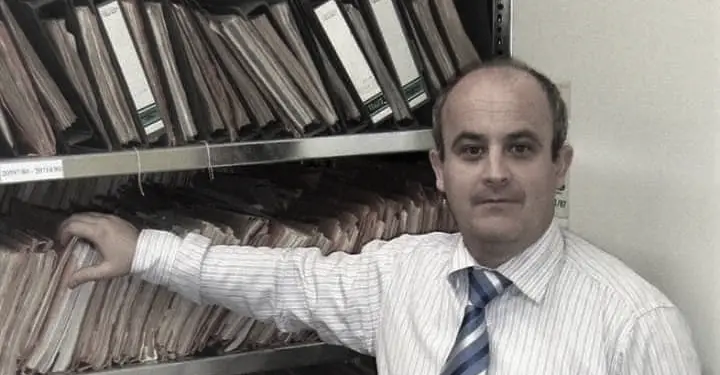
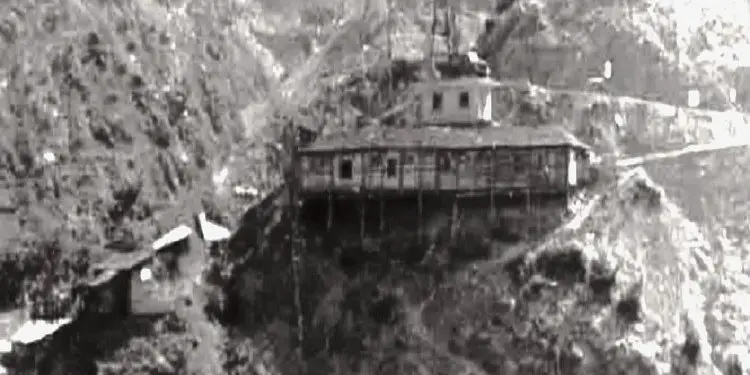
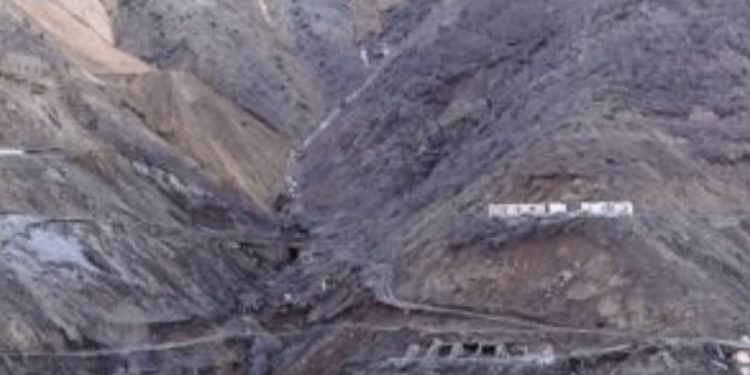
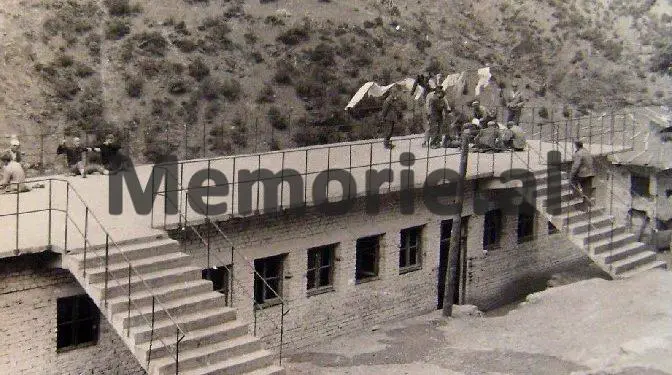
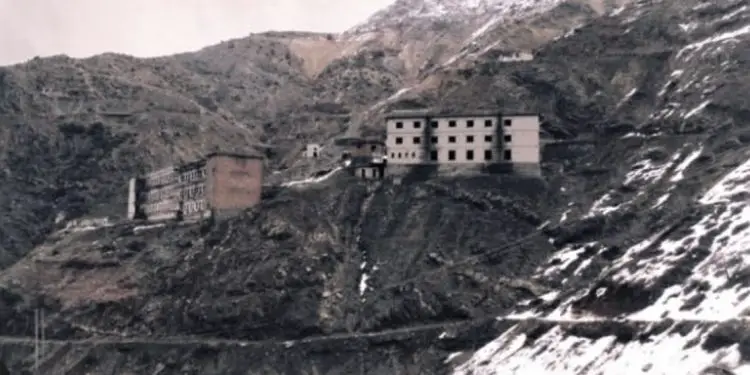
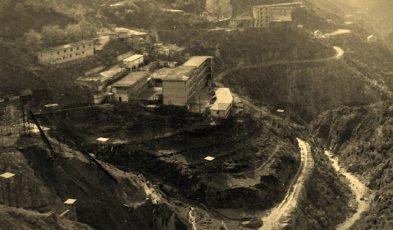
![“His capacity is quite low, he is not clear about the political situation, he only has two grades of school and has never held a book in his hand…”/The State Security document on Sulo Gradeci, Enver [Hoxha]’s escort, is revealed](https://memorie.al/wp-content/uploads/2025/11/Me-Sulo-Gradecin-ne-Dajt-350x250.jpg)

